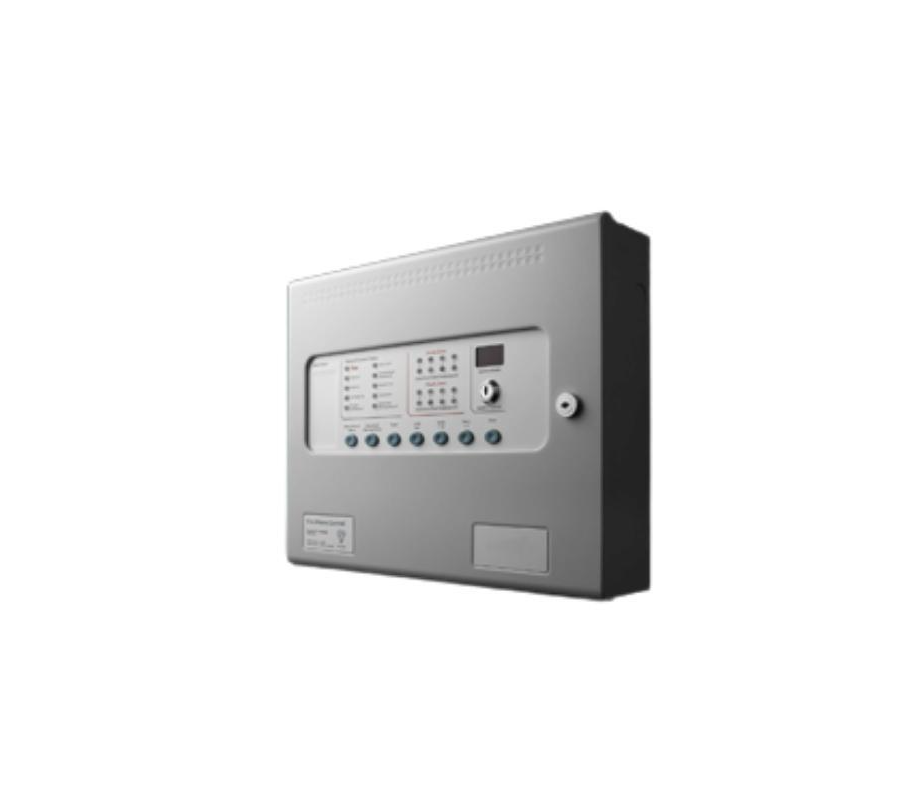Fire Detection Systems
There are many different types of fire alarms available to keep your home and business safe from fires. Each type of alarm serves a different purpose to detect and notify you of smoke, fire, or other hazards in the home or workplace.
Fire Alarm Systems

Conventional Systems
In a conventional system trigger, devices (detectors and call points) are hardwired into zoned circuits. Each zone circuit covers a different area of the premises, in a design that complies with BS5839 Pt.1-2013. Alarm sounders are normally wired using one of the following methods:
4-wire method - Sounders are wired on a minimum of two separate sounder circuits.
2-wire method - Sounders are wired on the same circuits as the trigger devices (special 2-wire control panel required).
The trigger devices signal fire or fault conditions to the control panel by changing from high to low impedance. The panel detects this impedance change by current monitoring and identifies the zone from which the signal was sent. A conventional system cannot identify individual devices from which the signal was sent.

Analogue Addressable Systems
ddressable (intelligent) systems incorporate hardwired loops, and each trigger device has a unique address code. The control panel carries out a polling routine in which each device is interrogated in a programmed sequence. Devices respond with a status report which, as confirmation that the correct device is responding, includes its own address code. Alarm sounders are wired either on separate circuits or incorporated into the detection loops. Intelligent systems give advance warning of a developing hazard and pinpoint the individual device raising the alarm. It is possible to follow the spread or progress of a fire as individual detectors report conditions in their area. This could allow a phased evacuation and provide important information for fire fighting teams.
Radio Systems
Radio (wire-free) systems offer solutions where hardwiring of devices is impractical or undesirable. Each device is monitored in a programmed sequence and alarm and fault signals are sent via the radio network infrastructure to the control panel.
From the incoming radio signal, the control panel identifies the device from which the signal was sent. The system can be integrated to provide information on historical events, which can be useful when investigating previous faults or false alarms. Installation of a radio system takes a fraction of the time for that of a hardwired system and, because there is no wiring, causes minimal disruption to décor.
Smoke Detectors
Optical Smoke Detectors
Optical smoke detectors incorporate a sensing chamber which houses an infrared light-emitting LED and photodiode. When smoke enters the detection chamber, a fraction of the collimated light is scattered onto the photodiode. If the resulting signal from the photodiode is above a preset threshold, the detector will enter into a state of alarm.
Heat Detectors
Heat detectors operate using a pair of matched negative temperature coefficient thermistors that are mounted in such a way that one thermistor is exposed to provide good thermal contact with the surrounding air, while the other is thermally insulated.
Under stable conditions, both thermistors are in thermal equilibrium and have the same value of resistance. If the air temperature increases rapidly, the resistance of the exposed thermistor becomes less than that of the insulated thermistor. If the ratio of resistance between the two thermistors exceeds a preset level, a state of alarm is initiated.
Beam Smoke Detectors
Beam smoke detectors (reflective) are normally specified for large, open areas, such as atria, warehouses, theatres, and churches. The transmitter and receiver form a single unit mounted to a wall. The unit emits an infrared beam to a reflector mounted on the opposite wall, and in the event of smoke partially obscuring the beam, an imbalance will occur, initiating a state of alarm.

Aspirating Smoke Detectors
Aspirating smoke detection provides a very early warning of a potential fire hazard, by utilising continuous air sampling through an appropriately designed series of pipes. Air drawn through the pipes is monitored by a smoke detection unit with multiple levels of sensitivity, to suit a variety of applications. With the detection unit set for high sensitivity, extremely small levels of smoke can be detected thus providing the ultimate fire protection system.
